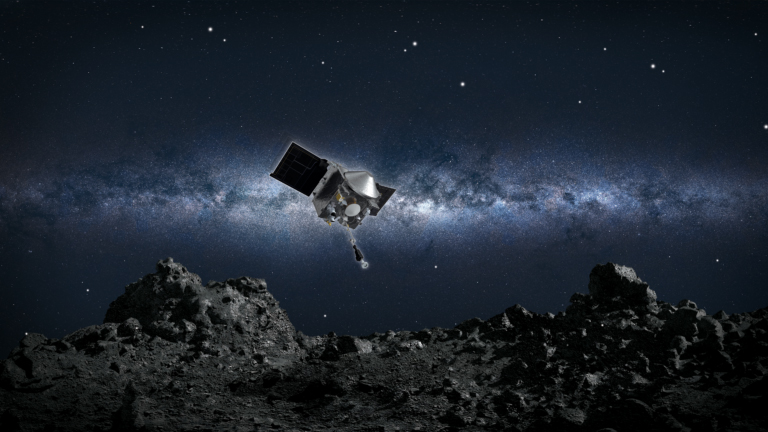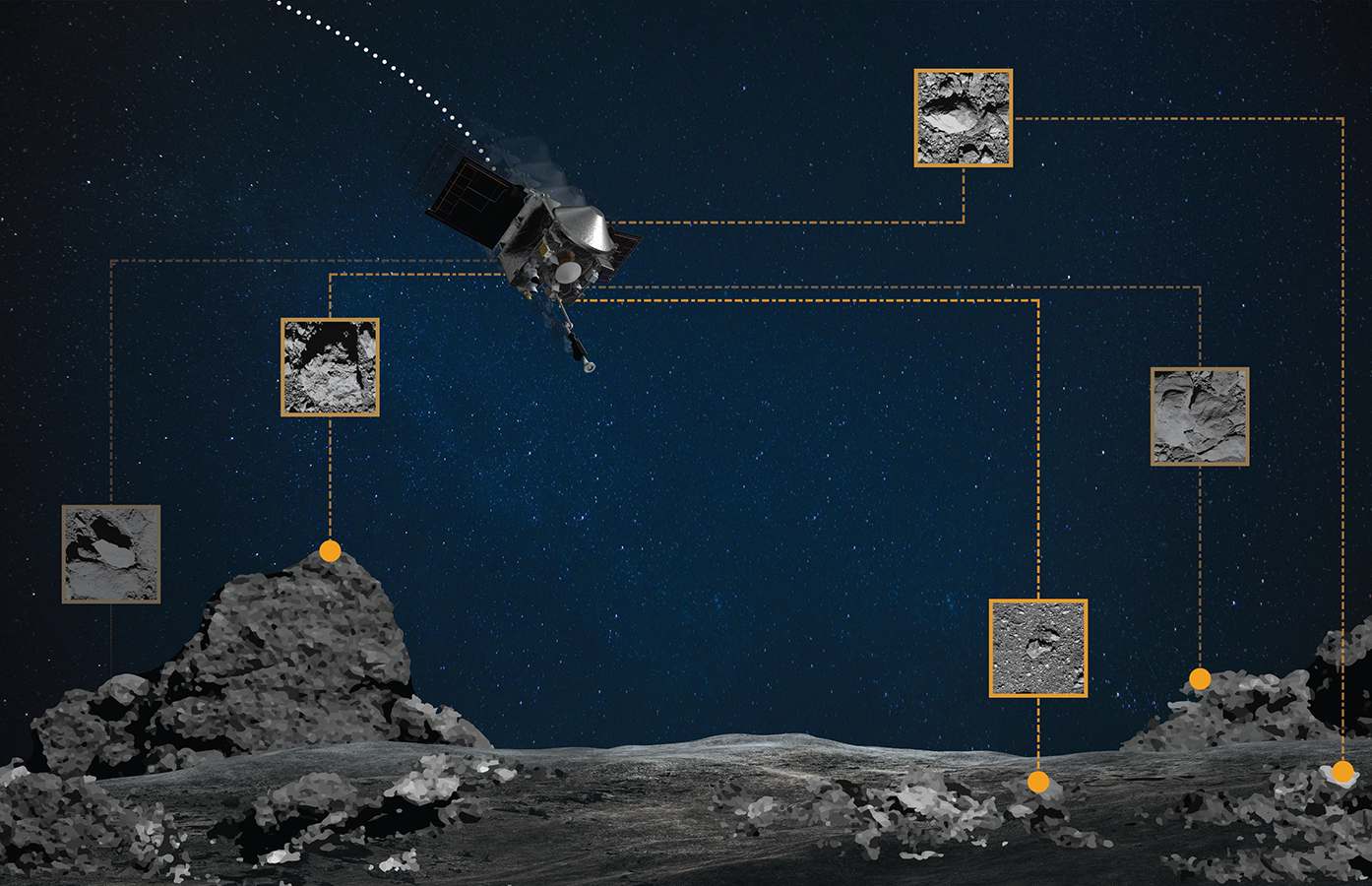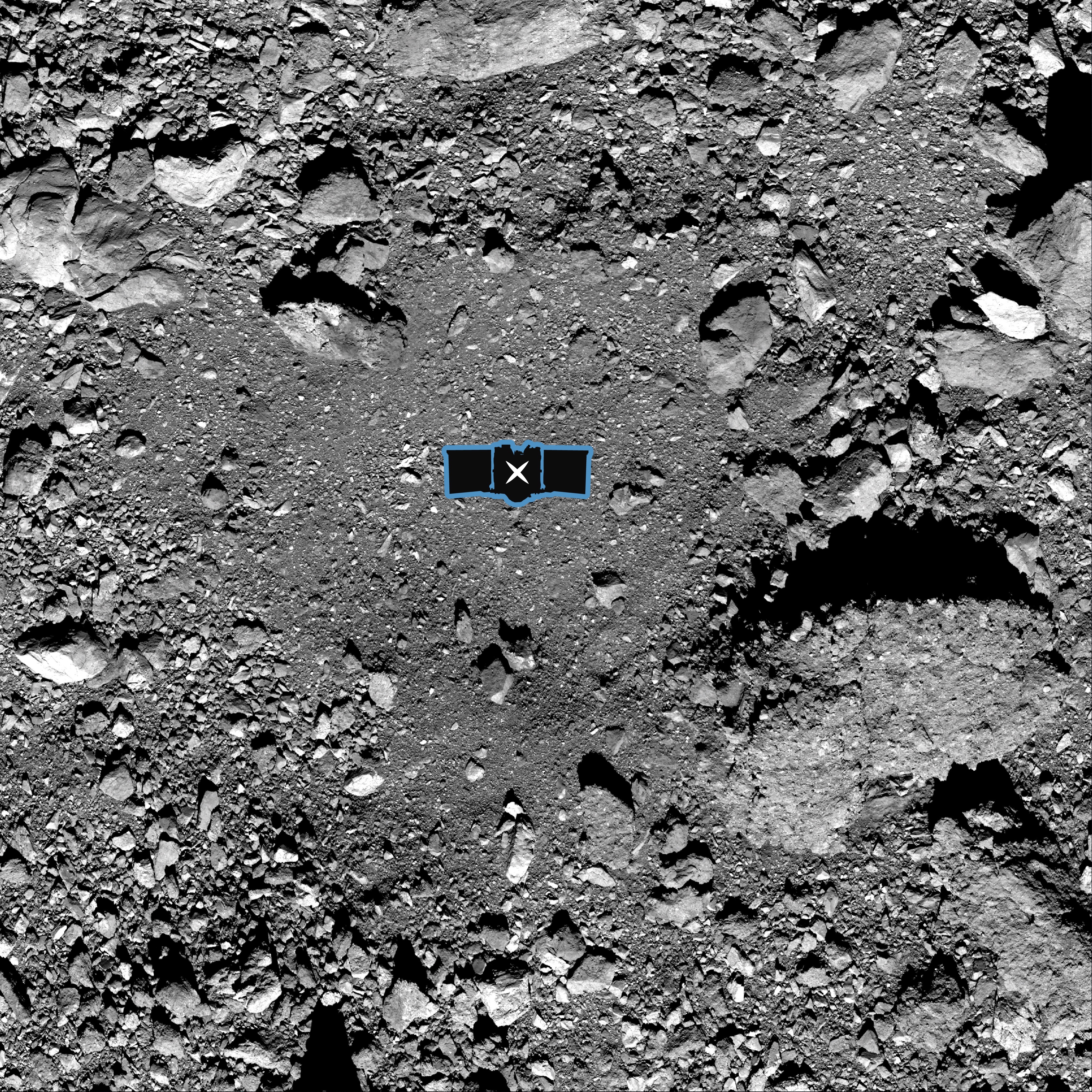NASA is about to play 'tag' with asteroid Bennu: Here's how it will work.
NASA's OSIRIS-Rex spacecraft will "TAG" asteroid Bennu Tuesday (Oct. 20) and collect a sample for return to Earth.
OSIRIS-REx is NASA's first asteroid-sampling spacecraft. The "touch-and-go" (TAG) sample collection attempt involves a series of maneuvers that will bring the spacecraft down to the asteroid's surface. The location selected for touchdown is called Nightingale, which is a rocky area measuring 52 feet (16 meters) in diameter and located in Bennu's northern hemisphere, according to NASA.
"We have never done this before," Nayi Castro, a mission operations manager for the OSIRIS-REx mission, said in a video from NASA. "We are actually going to collect a sample and bring it back down to Earth for further examination by scientists."
Video: Grabbing some asteroid is not easy: NASA explains the challenges
Related: NASA's asteroid-sampling mission in pictures
To achieve this, the spacecraft has been orbiting Bennu since 2018 and studying the asteroid in great detail, searching for the optimal landing spot — a location that is large enough, relatively flat and covered in fine-grained material.
However, finding this type of area was challenging, resulting in a number of additional close flybys and observations to select an appropriate sample site. The OSIRIS-REx team considered other potential locations such as Osprey, Kingfisher and Sandpiper before choosing Nightingale, which has the greatest amount of unobstructed fine-grained material, according to NASA.
How TAG will work
NASA's OSIRIS-REx spacecraft will perform three separate maneuvers to reach the asteroid's surface. The first step is called a checkpoint burn, during which the spacecraft will fire its thrusters to adjust its position relative to the Nightingale sample site. When OSIRIS-REx reaches an approximate altitude of 177 feet (54 m), another maneuver called a matchpoint burn will slow the spacecraft's descent and target a path to match the asteroid's rotation at the time of contact, according to NASA.
Get the world’s most fascinating discoveries delivered straight to your inbox.
The spacecraft's robotic sampling arm, called the touch-and-go sample acquisition mechanism (TAGSAM), will then make contact with Bennu's surface for less than 16 seconds before heading back up to orbit. Upon contact with the asteroid, one of three pressurized nitrogen canisters will fire, stirring up a sample of dust and small rocks that can then be caught in the arm's collector head and stored for return to Earth.
The descent to the surface of Bennu will take roughly four hours. The spacecraft will use natural feature tracking (NFT) to recognize landmarks during its descent and update its position, if needed, to navigate around large boulders and ensure a safe landing on a relatively clear space, David Lorenz, TAG campaign lead, explained in the video.
"There are several things that could go wrong, and we also have to be prepared that we won't be successful on our first try at Nightingale," Mike Moreau, deputy project manager for OSIRIS-REx, said in the video."
In the event that the first TAG attempt is not successful, the spacecraft is equipped with backup pressurized nitrogen canisters, which will allow for additional sample collection attempts. The team hopes to collect 2 oz. (60 grams) of fine-grained material from the asteroid's surface, which will be the largest sample return from space since the Apollo program, according to NASA.
The OSIRIS-REx team has also studied Nightingale to identify areas within the sample site that could potentially harm the spacecraft. A hazard map of the site was developed and programmed into the spacecraft's navigation system, so that if the NFT system detects a dangerous landmark, the spacecraft will autonomously back away from the asteroid. This will allow the mission to reattempt sample collection at a future date, according to the video.
Related: How NASA's asteroid sample-return mission works (infographic)
After collecting its sample, OSIRIS-REx will fire its thrusters to back away from Bennu. If all goes according to plan during collection, the team will verify the sample by taking a picture of the TAGSAM head to see if it contains surface material. A spin maneuver will also be performed on Saturday (Oct. 24) to measure the mass of the sample and ensure at least 2 oz. (60 grams) of material was collected and can be stored for return to Earth in 2023. However, if a sufficient sample was not collected, the spacecraft will be able to make two more attempts, according to the video.
"It is really exciting to know that we are finally going to be able to touch the surface of the asteroid and collect a sample to return back to Earth," Castro said.
Follow Samantha Mathewson @Sam_Ashley13. Follow us on Twitter @Spacedotcom and on Facebook.






